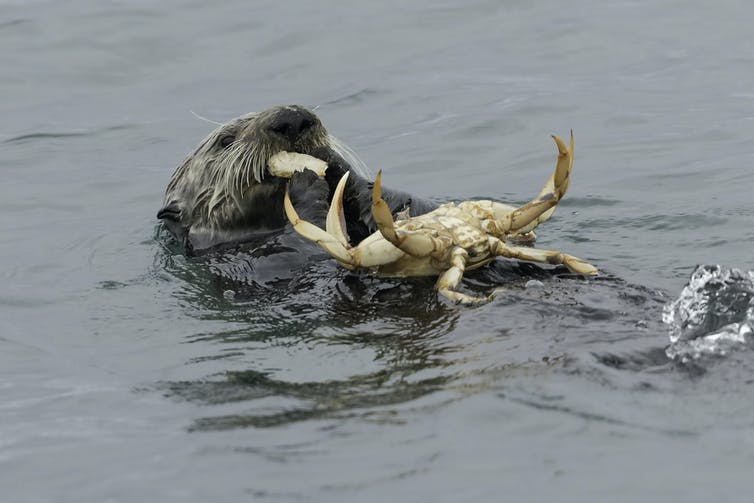Life in the cold can be difficult for animals. As the body chills, organs including the brain and muscles slow down.
The body temperature of animals such as reptiles and amphibians mostly depends on the temperature of their environment – but mammals can increase their metabolism, using more energy to warm their body. This allows them to live in colder areas and stay active when temperatures drop at night or during winter months.
Although scientists know mammals can increase their metabolism in the cold, it has not been clear which organs or tissues are using this extra energy to generate more heat. Staying warm is especially challenging for small, aquatic mammals like sea otters, so we wanted to know how they have adapted to survive the cold.
We assembled a research team with expertise in both human and marine mammal metabolism, including Heidi Pearson of the University of Alaska Southeast and Mike Murray of the Monterey Bay Aquarium. Understanding energy use in animals adapted to life in the cold may also provide clues for manipulating human metabolism.
Sea otter metabolism
It is especially difficult for water-living mammals to stay warm because water conducts heat away from the body much faster than air. Most marine mammals have large bodies and a thick layer of fat or blubber for insulation.
Sea otters are the smallest of the marine mammals, and do not have this thick layer of blubber. Instead, they are insulated by the densest fur of any mammal, with as many as a million hairs per square inch. This fur, however, is high maintenance, requiring regular grooming. About 10% of a sea otter’s daily activity involves maintaining the insulating layer of air trapped in their fur.
Grooming is a never-ending job.
Dense fur is not enough, by itself, to keep sea otters warm. To generate enough body heat, their metabolic rate at rest is about three times higher than that of most mammals of similar size. This high metabolic rate has a cost, though.
To obtain enough energy to fuel the high demand, sea otters must eat more than 20% of their body mass in food each day. In comparison, humans eat around 2% of their body mass – about 3 pounds (1.3 kilograms) of food per day for a 155-pound (70 kg) person.

Feeding on Dungeness crab in Monterey Bay, California.
Chase Dekker Wild-Life Images/Moment via Getty Images
Where does the heat come from?
When animals eat, the energy in their food cannot be used directly by cells to do work. Instead, the food is broken down into simple nutrients, such as fats and sugars. These nutrients are then transported in the blood and absorbed by cells.
Within the cell are compartments called mitochondria where nutrients are converted into ATP – a high-energy molecule that acts as the energy currency of the cell.
The process of converting nutrients into ATP is similar to how a dam turns stored…
